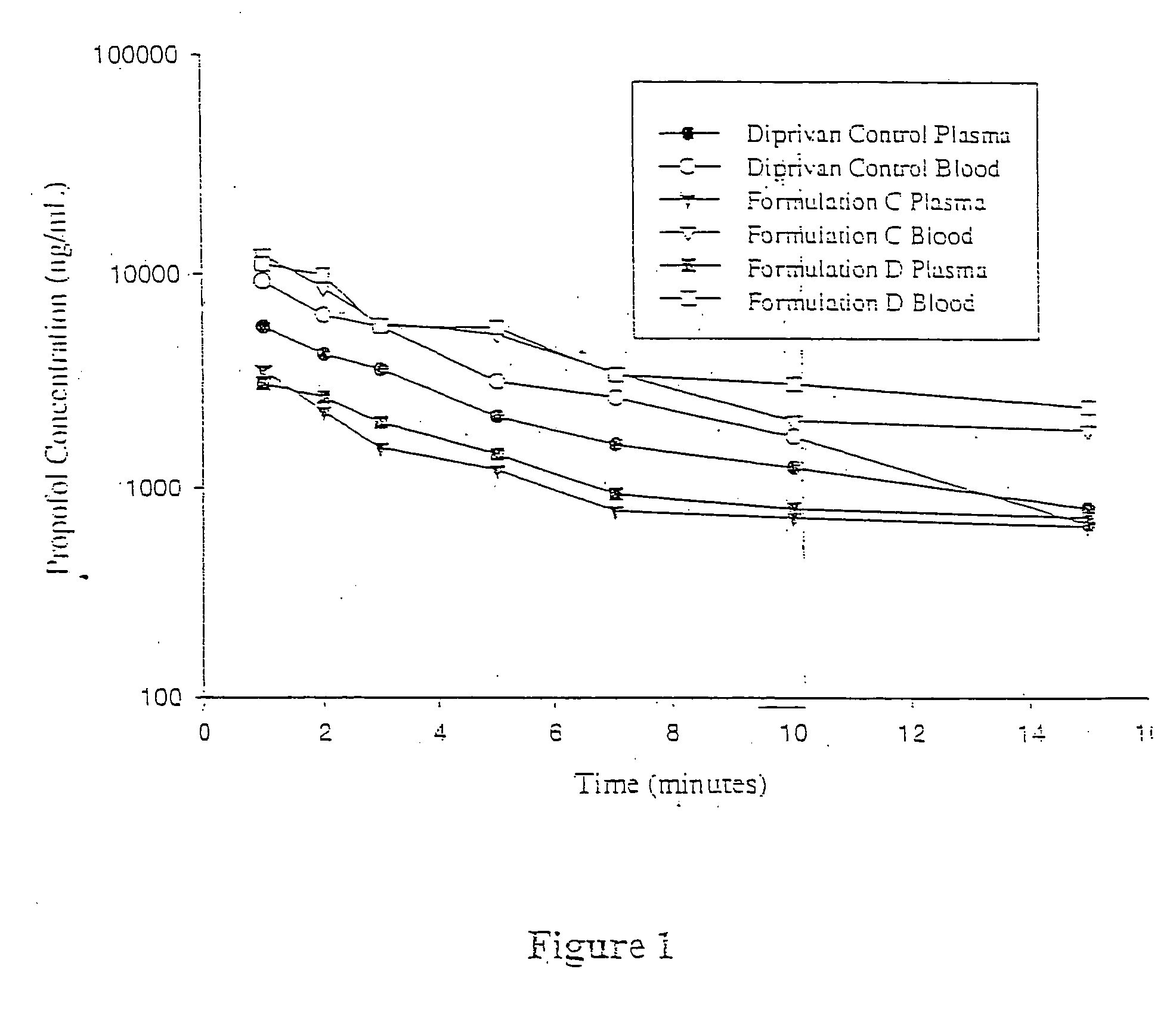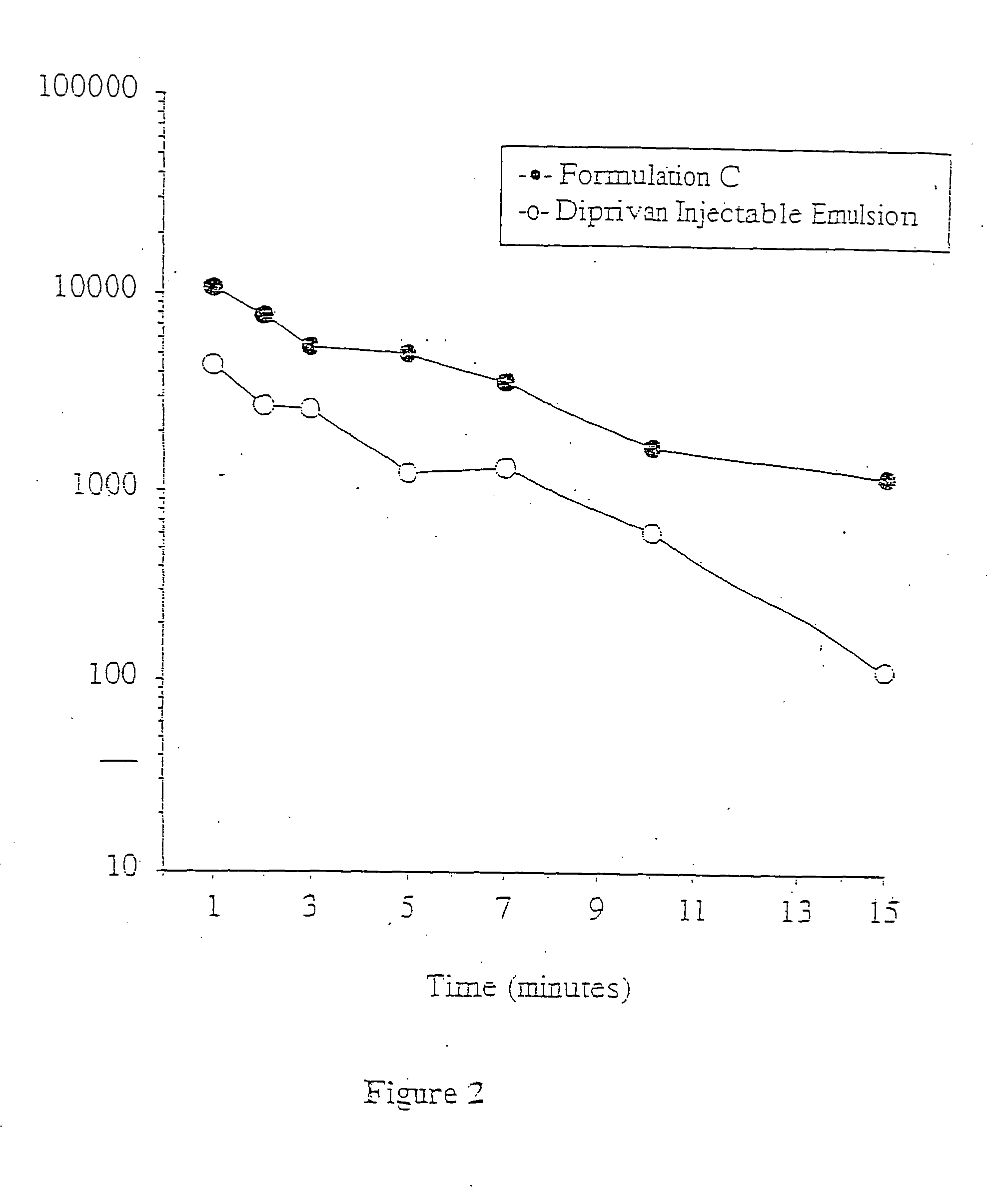Aqueous 2,6-diisopropylphenol pharmaceutical compositions
a technology of diisopropylphenol and composition, applied in the field of diisopropylphenol composition, can solve the problems of microbial contamination, associated medical complications, incompatibility with preservatives, etc., and achieve the effects of improving propofol composition, minimizing bacterial growth, and low concentration
- Summary
- Abstract
- Description
- Claims
- Application Information
AI Technical Summary
Benefits of technology
Problems solved by technology
Method used
Image
Examples
example 1
A propofol containing composition (Formulation A) was prepared as follows. Approximately 140 mg sodium deoxycholate, 200 mg polyoxyethylene 20 sorbitan monooleate, and 100 mg D-alpha-tocopheryl polyethylene glycol 1000 succinate were added to a glass vessel. Purified water was added followed by 100 mg propofol. Water was added as necessary to bring the total volume to 10 milliliters. The mixture was stirred at room temperature using a magnetic stirring bar for at least 4 hours over a 24-hour period. The resulting composition was clear to the naked eye with no visible solids present.
example 2
A propofol containing composition (Formulation B) was prepared as follows. Approximately 80 mg Poloxamer 237, 80 mg PEG-40 stearate, and 100 mg polyoxyethylene 20 sorbitan monooleate were added to a glass vessel. Purified water was added followed by 100 mg propofol. Water was added as necessary to bring the total volume to 10 milliliters. The mixture was stirred at room temperature using a magnetic stirring bar for at least 4 hours over a 24-hour period. The resulting composition was clear to the naked eye with no visible solids present.
example 3
A propofol containing composition (Formulation C) was prepared as follows. Approximately 500 mg PEG-400, 350 mg PEG-40 stearate, and 35 mg polyoxyethylene 20 sorbitan monooleate were added to a glass vessel. Purified water was added followed by 100 mg propofol. Water was added as necessary to bring the total volume to 10 milliliters. The mixture was stirred at room temperature using a magnetic stirring bar for at least 4 hours over a 24-hour period. The resulting composition was substantially transparent to the naked eye but slightly hazy.
Laser Light Scattering (LLS) particle size analysis was performed using a Zetasizer 3000HS (Malvern Instruments Inc., Southborough, Mass.). Particle size was determined to be less than approximately 100 nanometers.
PUM
| Property | Measurement | Unit |
|---|---|---|
| particle size diameter | aaaaa | aaaaa |
| particle size diameter | aaaaa | aaaaa |
| particle size diameter | aaaaa | aaaaa |
Abstract
Description
Claims
Application Information
 Login to View More
Login to View More - R&D
- Intellectual Property
- Life Sciences
- Materials
- Tech Scout
- Unparalleled Data Quality
- Higher Quality Content
- 60% Fewer Hallucinations
Browse by: Latest US Patents, China's latest patents, Technical Efficacy Thesaurus, Application Domain, Technology Topic, Popular Technical Reports.
© 2025 PatSnap. All rights reserved.Legal|Privacy policy|Modern Slavery Act Transparency Statement|Sitemap|About US| Contact US: help@patsnap.com


